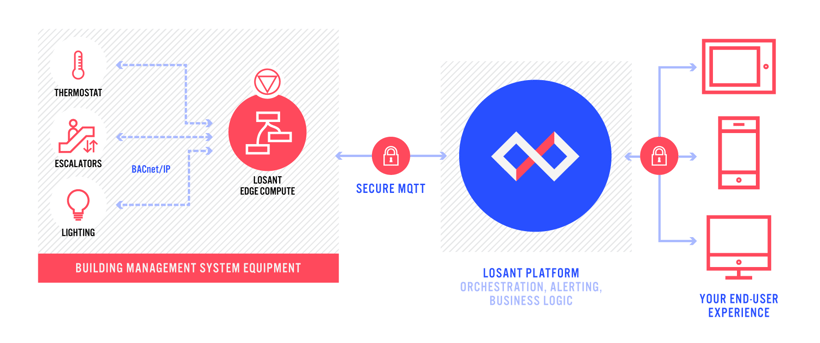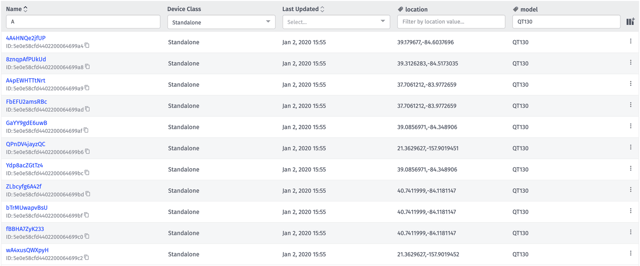Since introducing Losant Edge Compute to our application enablement platform, we’ve added first-class support for a number of widely adopted commercial and industrial protocols. The first release of our Edge Agent allowed for local communication with your things via HTTP and Modbus, and we’ve since added support for OPC UA, Allen-Bradley, and many more.
Today, we’re happy to announce support for another standard protocol: Building Automation and Control networks, otherwise known as BACnet.
BACnet on the Edge
Already using BACnet in a Losant application? You probably have a bridge application reading from a BACnet server that communicates with the Edge Agent, most likely over HTTP. Existing solutions will continue to work with these updates, but we recommend you try out this new functionality so you can streamline your edge architecture.
For the uninitiated, BACnet is a standard protocol for interacting with a number of building management systems, including:
- HVAC systems
- Elevators and escalators
- Security systems
- Access control (entryways)
- Fire alarms and suppression systems
- Lighting
The specification’s website has a tutorial on the history of the protocol, some common use cases, and how to architect an automation and control system using BACnet.
With the introduction of the BACnet: Read and BACnet: Write Nodes to our Edge Workflows, it is now easier than ever to record telemetry data generated by your building control systems, to interact with those systems, and expose both to your application’s end users in any form factor you see fit.

If you’re ready to take advantage of these new platform features but haven’t used Losant Edge Compute yet, we recommend starting with our walkthrough before jumping into these new workflow nodes.
Enhanced Device List
Today’s release also introduces new functionality to an application’s device list, bringing oft-requested updates to the table.

Advanced filtering within the table’s headers builds on the same functionality we introduced with advanced device queries, but it makes the process of finding subsets of devices much quicker, simpler, and more intuitive than using the advanced query interface. If you need to query for a set of devices that you cannot otherwise do with the new table headers, advanced device query is still available atop the table.
Showing, hiding, and rearranging columns has already been implemented in a number of our dashboard blocks, and we are beginning to roll this feature out to our application resource lists with this platform update.
New column display types introduce the ability to display many more of your devices’ properties at a glance in list form, particularly the values of device tags. This is another case where the functionality already exists within the device list dashboard block, and we are now rolling it out to the application’s device list.
With these updates, it is now easier than ever to:
- Display a list of all peripheral devices tied to a specific gateway device.
- View the value of a given device tag, or display only devices with a specific value for that tag.
- Return a list of devices that have been recently created or updated.
- View all the direct descendants of a given system.
Additional Updates
- The Serial Trigger and Serial Write Nodes now have some additional configuration options for overriding default connection/data values (i.e. Parity, Stop Bits, Data Bits, and RTS/CTS).
- The Workflow Trigger Node now allows you to choose which version of a workflow to fire; previously, the node only allowed for triggering the chosen workflow’s default version.
- We’ve rolled out performance improvements when bulk creating devices or exporting exceptionally large amounts of data.
- The experience render log now allows for copying a component’s given payload to your clipboard, which makes for easier debugging of your rendered views.
- Images within an application’s README now resize by their original proportions.
What's Next?
With every new release, we listen to your feedback. By combining your suggestions with our roadmap, we can continue to improve the platform while maintaining its ease of use. Let us know what you think in the Losant Forums.
